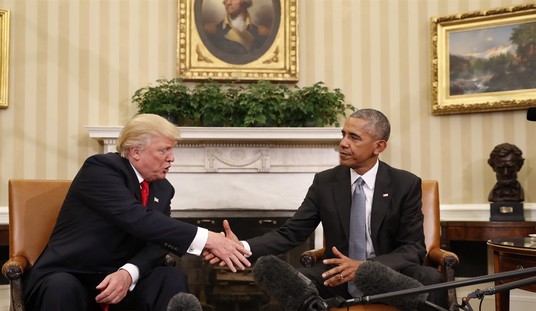When Scott Brown (R-MA) won his Senate seat, swept into office by his promise of becoming the Senate’s “filibuster breaker,” a lot of people said: “Whew! Now I don’t have to worry about that atrocious health-tax bill, or that cap and trade monstrosity!”
That just shows how euphoria clouds the mind. Because as soon as Republicans began celebrating, Democrats started furtively passing sealed manila folders to one another while making shushing sounds.
Republican elation didn’t last long. There was a distinct feeling of shock when President Obama let slip that health care was “still on the table.” And not just on the table, but that it would wend its way through the Senate via reconciliation, doubtlessly gathering an encrustation of rancid pork as it rolled along.
Well chum, sit down. Because the same thing is happening with the greenhouse gas limiting bill: the cap and trade … and tax, and might as well spend. It, too, has risen from the dead.
Only it never was dead, of course. It was just in hiding, waiting, and now is under active revision with the leadership of John Kerry (D-MA), Lindsey Graham (R-S.C.), and Joe Lieberman (I-CT).
At this writing, the public doesn’t know exactly what measures will be adopted in the revised Senate bill, but we can make some intelligent guesses. The first being that the law of unintended consequences is set to strike once more.
Suppose, as is not likely, that it is true that humans are untowardly affecting the climate such that temperatures are everywhere increasing, and that those increasing temperatures are everywhere devastating or harmful and nowhere helpful. Suppose, too, that these temperature increases are directly caused by controllable greenhouse gas emissions, and that if these emissions can be reduced by a few percentage points, temperatures will not everywhere increase nor be everywhere harmful.
Suppose all that is true. Cap and trade is still a bad idea.
We know that greenhouse gas emissions (GGEs) can be reduced in two ways: by requiring utilities to cap production or engage in sequestration; or by requiring from others limitations on demand.
To limit demand, Congress could mandate citizens drive no faster than 55 miles per hour. That happened before in response to another energy “crisis,” so it is rational to believe it could happen again. Congress might also dabble with forcing rental car companies to use only “energy efficient” (i.e., more expensive) cars.
Perhaps Congress could require transportation companies to prove that some function of “miles traveled,” adjusted by fuel type, vehicle weight, and so forth, holds steady or falls. Or manufacturers will be taxed for exceeding energy-use “goals” (which will be set as a function of the influence of each firm’s senators).
Limiting demand will increase costs, which would have to be spread across the economy. Plus, these are costs with no return on investment — except, possibly, a slightly cooler Earth. Also, any limit strategy will barely put a dent in GGEs, so that even the temperature-ROI is trivial.
Limiting production is straightforward: simply cap allowable GGEs. A mixed strategy of sequestration and sliding caps is also plausible. Utilities will likely be allowed to exceed caps by paying an “offset” tax.
If that is true, then the amount of GGEs will not fall, but will continue their steady increase. The law will then have abandoned its original intent. If it is false — if there are just simple caps and no tax — then the entire American economy will be hamstrung.
This is because there is no way enough nuclear, wind, or solar plants can come on line in any reasonable amount of time to make up for the losses in GGE-based energy. Thus, with just a cap and no tax, Congress will have mandated, “Produce this much, and no more.”
Now, since even Senator Kerry can understand that much economics, it is very likely we’ll see a tax-based bill.
There are hints that a portion of that energy tax will be shunted to the Highway Trust Fund, the agency responsible for the upkeep of interstate freeways. Look forward to fresh paint on the dividing lines and other forms of pork if this bill passes.
Some of the money will have to be put towards non-GGE energy production, both in research and in capital projects.
Who’s going to do the research? Energy companies do it now, of course, and they’ll likely do so in the future.
This means the government will tax energy companies, spend money on a bureaucracy charged with oversight of the tax, siphon some of that money off for “special projects,” and then give a fraction of the money back to companies to research and build non-GGE-based energy platforms. Efficient, no?
In other words, energy companies will be forced to raise rates to pay for the tax — with all the negative consequences that entails — or they will be forced to spend less money on research. Either way, GGEs will not fall. And because research will have been hampered, the introduction of new technology will be delayed.
Thus, in the name of good intentions, cap and trade will cause the harm which it seeks to eliminate.
And you can bet your mother’s cookies that there will be no provision in the bill for it to dissolve if it is discovered that all those suppositions above are proved to be false.









Join the conversation as a VIP Member